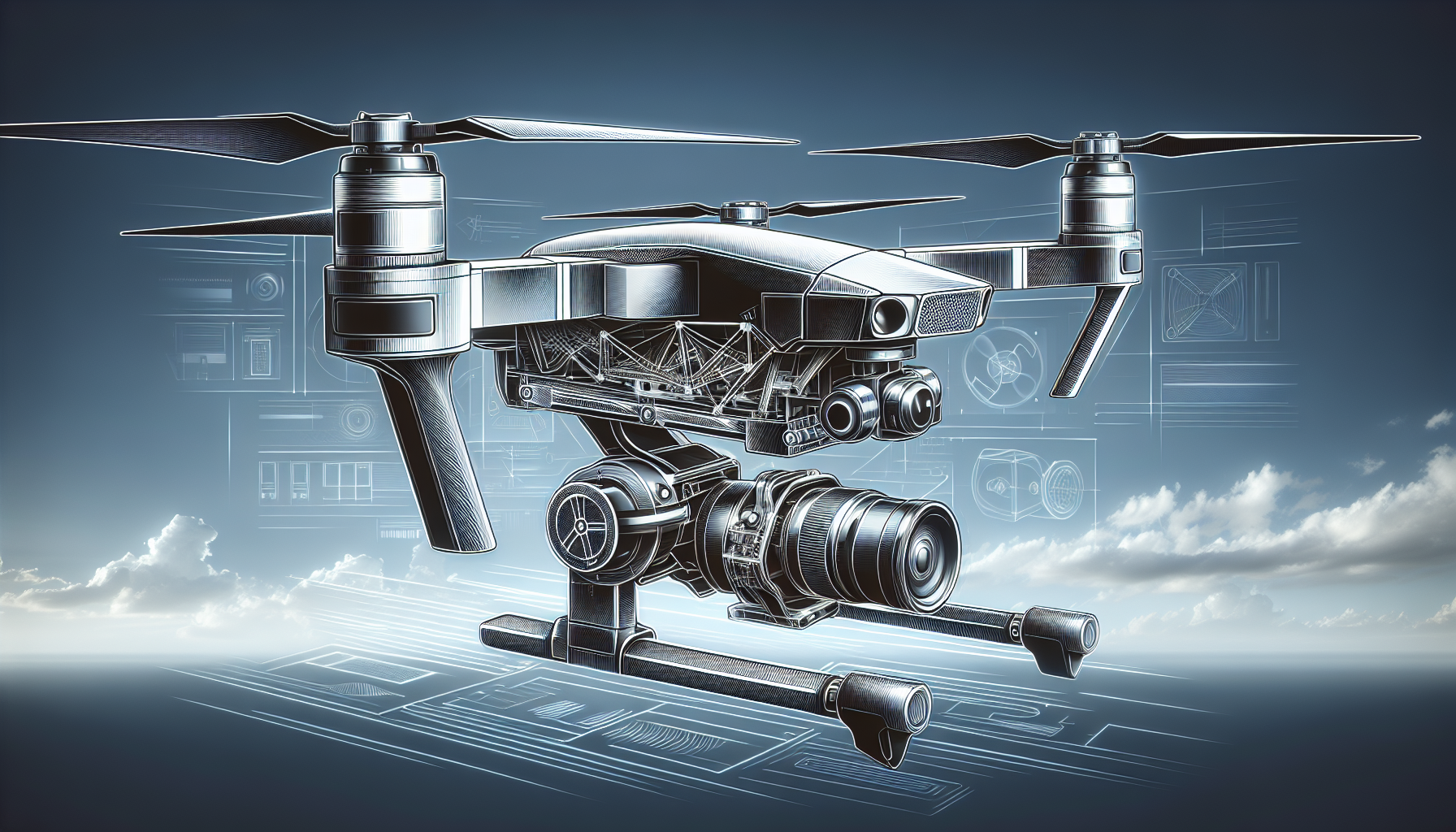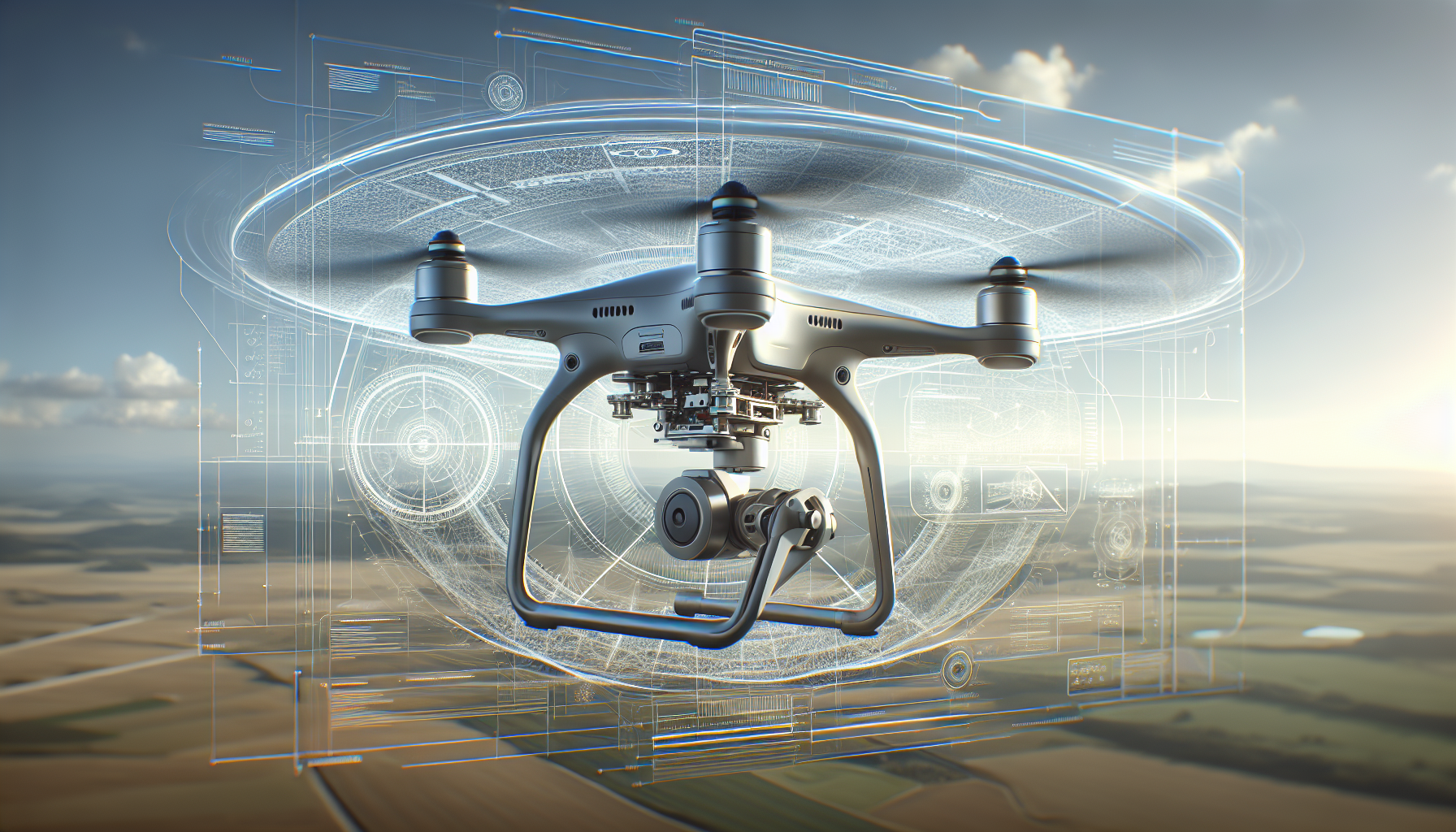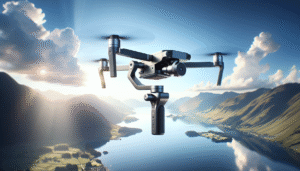Have you ever wondered which drone gimbal is the best fit for your camera? With the world of aerial photography and videography expanding like the universe, keeping pace with its fast-paced advancements can feel daunting. Luckily, choosing the right drone gimbal doesn’t have to be an overwhelming challenge. Let’s navigate the skies together to find the gimbal that perfectly complements your camera based on payload requirements. Think of this as a friendly chat over coffee about the intricacies of drone gimbals—minus the caffeine jitters and with a dose of informed decision-making.

Understanding the Basics: What is a Drone Gimbal?
First things first, let’s establish what a drone gimbal is and why it’s essential for capturing stable and smooth footage. A drone gimbal is a pivoted support that allows the rotation of an object about a single axis. In simpler terms, it’s the stabilizer for your camera, ensuring that no matter how shaky your drone’s flight might be, your footage remains silky-smooth.
Gimbals work by compensating for any unwanted movement of the drone, allowing the camera to stay steady. Think of it as the unsung hero of aerial photography—the steady hand behind those breathtaking shots you see on social media and nature documentaries.
The Importance of Payload Capacity
When discussing drone gimbals, the term “payload” refers to the maximum weight a gimbal can handle without compromising performance. It’s a crucial factor to consider because using a gimbal beyond its payload capacity can result in jittery footage or, worse, damage to your equipment. Matching your camera’s weight and size with the right gimbal ensures optimal performance and protection for your gear.
Imagine buying a bicycle helmet for a toddler and expecting it to fit an adult—it’s just not going to work out well. Similarly, the harmony between your drone gimbal and camera can make or break your aerial art.

Top Drone Gimbals by Payload: An Overview
Now, let’s dig into the nitty-gritty details. Here is an overview of some of the top drone gimbals categorized by payload capacity, providing you with options that range from light camera setups to those bearing the heftiest of lenses. The goal here is to equip you with the knowledge to make the most harmonious match between your camera and gimbal.
Lightweight Gimbals (Up to 1kg)
If you own a lightweight camera, you’ll need a gimbal that offers precision without the bulk. These gimbals are perfect for compact cameras and action cams, delivering smooth footage without unnecessary weight.
- DJI Zenmuse H4-3D
- Payload Capacity: Up to 300g
- Best Used With: GoPro Hero4
- Features: This model’s lightweight architecture doesn’t compromise on performance, providing stabilizing gestures that effortlessly translate into spectacular footage.
- FeiyuTech G4 Pro
- Payload Capacity: Up to 600g
- Best Used With: Smartphones and ultra-lightweight cameras
- Features: Known for its ease of use and quick setup, the G4 Pro is favored by amateur filmmakers who prioritize mobility.
Medium Payload Gimbals (1kg – 3kg)
For those who dabble with mirrorless cameras and DSLRs, medium payload gimbals provide a balanced solution. They offer enhanced stability and flexibility in maneuvering heavier camera setups.
- DJI Ronin-S
- Payload Capacity: Up to 3.6kg (but optimal up to 3kg for drones)
- Best Used With: Mirrorless cameras, compact DSLR setups
- Features: With its modular and ergonomic design, it supports extended shooting with less fatigue. Its intuitive operation is a favorite among semi-professionals.
- Zhiyun Crane 2
- Payload Capacity: Up to 3.2kg (optimal at 2.5kg for aerial use)
- Best Used With: DSLRs and heavy mirrorless cameras
- Features: A master in balancing, the Crane 2 offers supreme stability and can be controlled via a wireless remote, ideal for dynamic shooting environments.
Heavy-Duty Gimbals (3kg and Above)
When dealing with high-end professional gear, it’s time to pull out the big guns. Heavy-duty gimbals are tough, rugged, and built for filmmakers who demand nothing but the best from their equipment.
- Freefly Movi Pro
- Payload Capacity: Up to 6.8kg
- Best Used With: Large cinema cameras
- Features: A powerhouse in the industry, it provides breathtaking stability even with cinematic rigs. It comes with a tailored ecosystem for enhanced flexibility and efficiency in professional environments.
- DJI Ronin 2
- Payload Capacity: Up to 13.6kg
- Best Used With: Complex film camera setups
- Features: As the big brother in DJI’s line-up, Ronin 2 can handle even the most demanding cinematic cameras. It’s engineered to withstand substantial gusts, with intuitive controls making complicated shots look easy.
Navigating Additional Features and Considerations
While payload capacity is crucial, there are a few other points to ponder when choosing a drone gimbal:
Compatibility and Adaptability
Ensure that the gimbal you choose is compatible with your drone and camera model. Some gimbals offer modular designs, allowing adjustments and customization to suit various camera types better.
Battery Life and Power Management
Assess the gimbal’s battery life, especially if you’re planning to shoot long-duration footage. A gimbal with efficient power management can be a valuable asset, providing extended shoot times without needing constant recharges.
Ease of Use
Consider how easy the gimbal is to set up and operate. If you’re not a technical whizz, having a user-friendly interface with intuitive controls can make a world of difference.
Considerations for Future Upgrades
Think about scalability if you plan on upgrading your camera or expanding your gear in the future. A gimbal that can adapt to new equipment will save you money and hassle down the line.
Customer Support and Warranty
Check the manufacturer’s warranty and customer service reputation. A robust support system can be a lifesaver if you encounter issues with your gimbal setup.
Making Your Choice: Matching Gimbals to Cameras
With all this information in hand, matching the right gimbal to your camera setup becomes a clearer task. Here’s a handy table for quick reference based on popular camera models and corresponding gimbal suggestions:
| Camera Model | Recommended Gimbal | Payload Capacity (kg) |
|---|---|---|
| GoPro Hero Series | DJI Zenmuse H4-3D | 0.3 |
| Sony a7 Series | Zhiyun Crane 2 | 2.5 |
| Canon EOS R | DJI Ronin-S | 3.0 |
| Blackmagic URSA Mini | Freefly Movi Pro | 6.8 |
| ARRI Alexa Mini LF | DJI Ronin 2 | 13.6 |
Your journey to aerial mastery is just taking off. Consider your options carefully, keeping in mind the specific demands of your camera setup and intended use. Pay attention to the details and nuances—much like selecting a fine wine to pair with a meal, the right gimbal can elevate your cinematic concoctions to unprecedented heights.
Final Thoughts
Stepping into the exhilarating world of drone photography and videography is akin to learning a new dance—it requires practice, patience, and the right partners. Your gimbal, akin to a dance partner, must be in sync with your camera to capture footage that resonates with both power and grace. As you ascend the skies with your chosen equipment, remember that the right tools are here to aid and elevate your creative vision.
In closing, let’s acknowledge that the choice of a drone gimbal may not fundamentally change your perspective on life, but it will certainly transform the way you capture the world around you. Whether for professional ventures or personal projects, equipped with the appropriate knowledge and tools, the sky—and perhaps beyond—is truly the limit.
![Best Gimbal For DJI Mini 4 Pro In 2025 [Top Picks + Quick Deals]](https://droneaperture.com/wp-content/uploads/2025/06/best-gimbal-for-dji-mini-4-pro-in-2025-top-picks-quick-deals-1-300x171.png)
![Top 5 Drone Gimbals For Cinematic Footage Under $500 [2025 Tested]](https://droneaperture.com/wp-content/uploads/2025/06/top-5-drone-gimbals-for-cinematic-footage-under-500-2025-tested-300x171.png)
